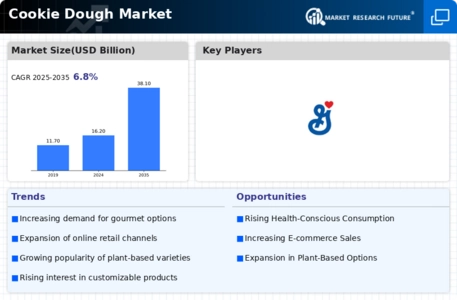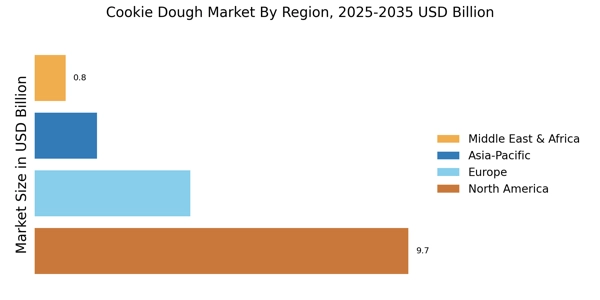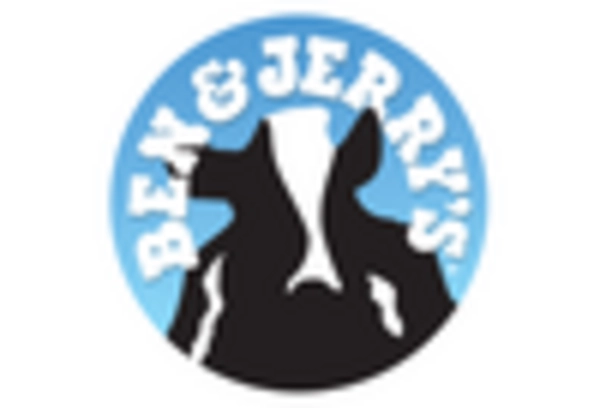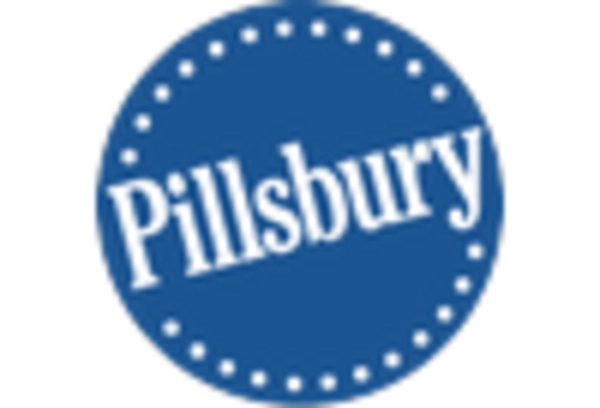Leading market players are investing heavily in research and development to expand their product lines, which will help the Cookie Dough Market grow even more. Market participants are also undertaking a variety of strategic activities to expand their global footprint, with important market developments including new product launches, contractual agreements, mergers and acquisitions, higher investments, and collaboration with other organizations. To expand and survive in a more competitive and rising market climate, the Cookie Dough industry must offer cost-effective items.
Manufacturing locally to minimize operational costs is one of the key business tactics used by manufacturers in the global Cookie Dough industry to benefit clients and increase the market sector. In recent years, the Cookie Dough industry has offered some of the most significant advantages to consumers, including convenience, versatility, and the opportunity to indulge in nostalgic flavors and comforting treats. Major players in the Cookie Dough Market, including consumers, including convenience, versatility, and the opportunity to indulge in nostalgic flavors and comforting treats, are attempting to increase market demand by investing in research and development operations.
General Mills Inc. is a renowned manufacturer and marketer of branded consumer foods, boasting a diverse product portfolio that includes grains, fruits, savories, nutrition bars, frozen hot snacks, ready-to-eat cereals, natural pet food, refrigerated and frozen dough, baking mixes and ingredients, yogurt, and super-premium ice cream. Additionally, the company offers convenient meal options such as meal kits, ethnic meals, pizza, soup, side dish mixes, frozen breakfast items, and frozen entrees.
General Mills markets its products under various well-known brand names, including Blue Buffalo, Food Should Taste Good, Fruit Roll-Ups, Blue Basics, Cheerios, Chex, Cocoa Puffs, Cookie Crisp, EPIC, Fiber One, Fruit Gushers, Gardetto's, Go-Gurt, Gold Medal, and Golden Grahams. With operations spanning across Asia, the Middle East, Africa, Europe, North America, and Latin America, General Mills is headquartered in Minneapolis, Minnesota, USA.
Nestle SA (Nestle) is a renowned manufacturer and marketer of a wide array of food products and beverages. Its extensive product portfolio includes baby food, bottled water, cereals, chocolates and confectionery, coffee, and culinary products. Additionally, Nestle offers plant-based foods, chilled and frozen foods, dairy products, nutritional products, ice cream, and pet care items. The company markets its diverse range of products under popular brand names such as Aero, Purina Alpo, Milkybar, Nestle Ice Cream, Cerelac, Nescafe, Nespresso, Nido, Perrier, S. Pellegrino, Acqua Panna, Nestea, Milo, Maggi, Buitoni, Cailler, Movenpick, Purina, Boost, Gerber, and Kit Kat.
With a global presence spanning across Asia, Oceania, the Americas, Europe, the Middle East, and Africa, Nestle is headquartered in Vevey, Waadt, Switzerland.


















Leave a Comment